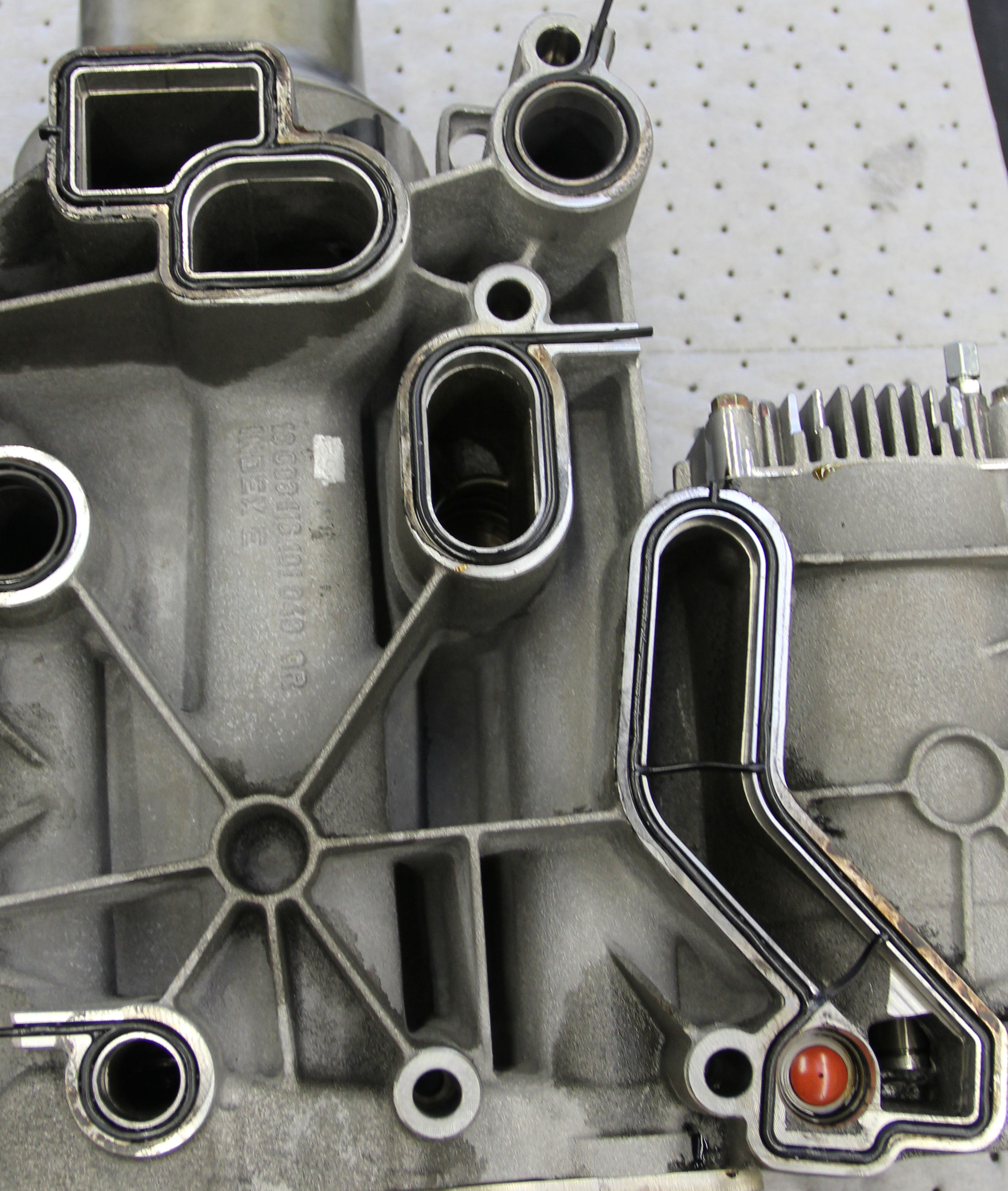Not an O-ring, but in principle still an O-ring?
Whenever we mention O-rings everyone knows what we mean – those small black rubber rings, the simplest gaskets you can get. Or so we assume.
Since the O-ring was first developed, a long time ago now, enormous strides have been made in its engineering. Ongoing material development has increased its range of applications, while better production toolings and processes have improved its dimensional stability and mechanical robustness.
An O-ring is one of the most robust sealing concepts, but is rather limited from an application point of view. Most O-rings are used for radial sealing of cylindrical geometries, so to make use of the sealing characteristics of the O-ring in more complex geometries, so-called form seals were developed. We will look closer at these seals, to see why they can so often be found in modern engine designs.
The major advantage with using elastomeric form seals is their wide variety of applications – the temperature range they need to function in, the ability to withstand different kinds of fluids and gases and the freedom of form and shape are the most apparent ones. The term ‘form seal’ can also point to different kinds of sealing geometries:
- O-ring type seals without an O-ring cross-section. Examples include D-shaped seals for a greater compression width, and X-shaped seals such as those used in some motorcycle chain sets.
- Shaped seals with an O-shaped cross-section. These were known to be used in, for example, earlier types of valve covers for air cleaner housings.
- Shaped seals without O-shaped cross-sections. These are the most common types in modern engines. Typical applications for these seals are in oil and fuel filtration modules.
The degree of complexity in contemporary engine design is growing all the time. One reason for this is that the vehicle layout, and therefore engine installation and integration, needs to be packaged in a smaller engine bay space. With the fast-growing use of hybrid systems within the same envelope, this means less room for what was already there – the engine. This in turn has led to a higher level of integration of engine functions and components, and several engine parts are being engineered together, such as coolant, fuel and oil pumps and their respective filters.
Filtration itself has also become more complex. Where originally we had only mainstream filters, now we see more and more spinner filters for even higher filtration efficiencies. And these additional components need packaging and connections to the engine block somewhere on the engine.
With so many connections of different fluids and gases, the engineering of the sealing types for these connections is more difficult than before. Increased sizes and sealing areas of components have highlighted the limitations of the flat seal types, which need closely spaced bolts and a high-tolerance flatness for both mating components. These demands have proved very difficult to meet, although elastomeric form seals are a significant step forward.
Where flat seals need an absolutely flat surface, the form seal is assembled in a tooled groove, meaning a very stable tolerance can be achieved. Groove depth can be measured before final machining of the corresponding flange – a best-fit machining operation – leading to a very tight tolerance over the total sealing area.
Another design advantage with elastomeric form seals is the ability to create topography (local differences in shape), enabling more freedom in critical sealing areas. This means slight adaptations can be made to the seal height, enabling small differences in seal compression where required. Anything that can be adapted dimensionally in the production tool can be used to increase sealing capability.
Apart from this, the risk of damaging the groove is far less than damaging a sealing surface for a flat gasket, leading to lower scrap during production. Also, the chances of damaging the seal itself are significantly lower with form seals. Since they are pre-assembled in a groove of the ‘to be sealed’ component, again the chance of damage is minimal. And we’ve all known flat seals that have refused to stay where we wanted them to during assembly, and very often they have had to be kept in place using some kind of liquid seal or even glue.
So, with the increasing complexity of engineering solutions, the O-ring seal has evolved into elastomeric form seals of larger area, and are now able to seal larger and more complex geometries – essential in the modern high-performance automotive and racing industries.
 Fig. 1 - Example of a large and complex sealing geometry using an elastomeric form seal
Fig. 1 - Example of a large and complex sealing geometry using an elastomeric form seal
Written by Dieter van der Put